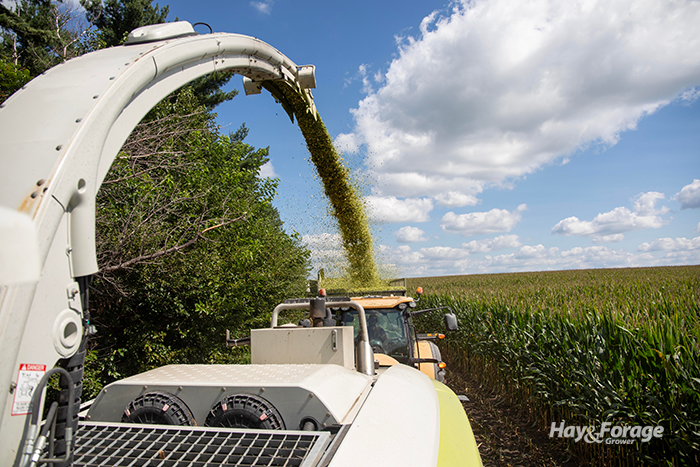Chop-chop! Get choppers ready for corn |
| By Mike Rankin, Senior Editor |
|
|
|
Forage harvesters have a plethora of moving parts and possible adjustments. In part, this is so the machines can be fine-tuned to the many different types of crops that may be chopped in a given year. Corn silage harvest is either underway or close to it in many parts of the U.S., and the machine settings for corn have a profound impact on the performance of animals that will ultimately consume the crop. Before moving from the summer’s haycrop silages into harvesting corn, prudent operators take a close look at their chopper’s components and make needed adjustments. “The overwhelming feedback that I receive is that alfalfa, grass, and cover crops are tough on the choppers,” notes Jon Rasmussen, a dairy technology specialist with Vita Plus. “Most of this is due to the choppers picking up lower yielding crops that tend to gather more stones, dirt, and other debris. This causes more deterioration to slip clutches, knives, shear bars, and blowers.” From an animal perspective, kernel processing and length of cut top the list of preharvest checkpoints. As such, the kernel processor, shear bar, and knives demand upfront attention. “The kernel processor should be checked prior to putting it in the chopper,” Rasmussen writes in a recent article. “Evaluate the rolls and roll gaps and make certain the gaps can be adjusted during chopping.” He also recommends checking the bearings to ensure they are still in good shape and properly lubricated. “Lubrication is a big deal; the last thing you want is a hot bearing or processor that shuts down,” he asserts. Following a summer of haycrop silage harvest, shear bars are often rounded instead of having a nice square edge. “If the shear bar still has a good edge, you can turn it; if not, it’s best to replace the shear bar before starting corn silage,” Rasmussen explains. “A shear bar in optimum shape will help prevent long leaves on the corn silage as the harvest season proceeds.” The dairy specialist encourages chopper operators to stop each day during harvest and sharpen the knives. At the same time, set the appropriate cutting gap. “By taking a little extra time each day to ensure that knives are sharp and the gap is set correctly, you will be happier with the cut length and the speed at which you are able to chop,” Rasmussen contends. “We have all been in a rush and find ourselves seemingly trapped to just push on, but timely sharpening and readjusting the theoretical cut length is essential.” But wait, there’s more Although the kernel processor, shear bar, and knives top the preharvest checklist, there are many other machine components that need attention. Based on company and mechanic’s recommendations, Rasmussen also encourages operators to: • Check the automatic lubrication systems and failure alert systems so you can be confident the chopper is maintained. If you don’t have an automatic lubrication system, establish times to grease the machine. • Check the gearboxes and fill them with the appropriate gear lube. There are several different kinds of recommended gear lube depending on the type of gearbox. • Check all the pressure relief points so they can breathe. • Check for and replace cracked belts. • Check the gap on the blower paddles. • On the head, check the knives, gearboxes, and clutch pads. Keep spare clutch pads on hand. During the harvest, Rasmussen recommends that chopper operators communicate with their farm mechanic or dealership regarding the machine’s operation. In the off-season, he advocates attending dealership chopper clinics for tips on operating and maintaining the chopper more efficiently. “Sharing knowledge will help keep the chopper running smoothly and everyone on the team positively engaged for a safe and successful harvest,” he concludes. |

